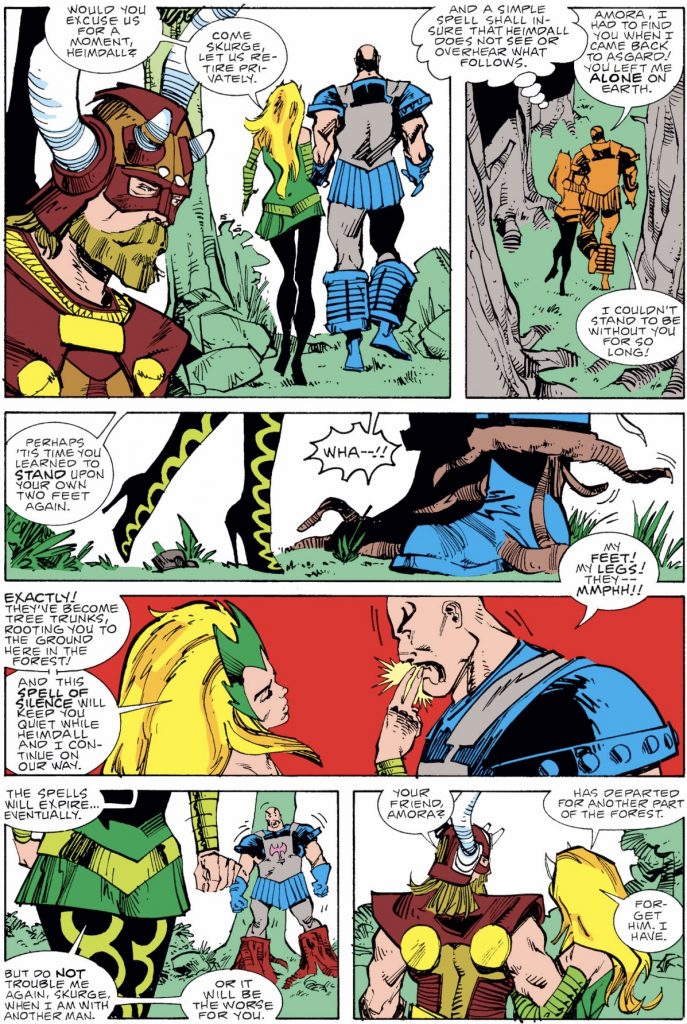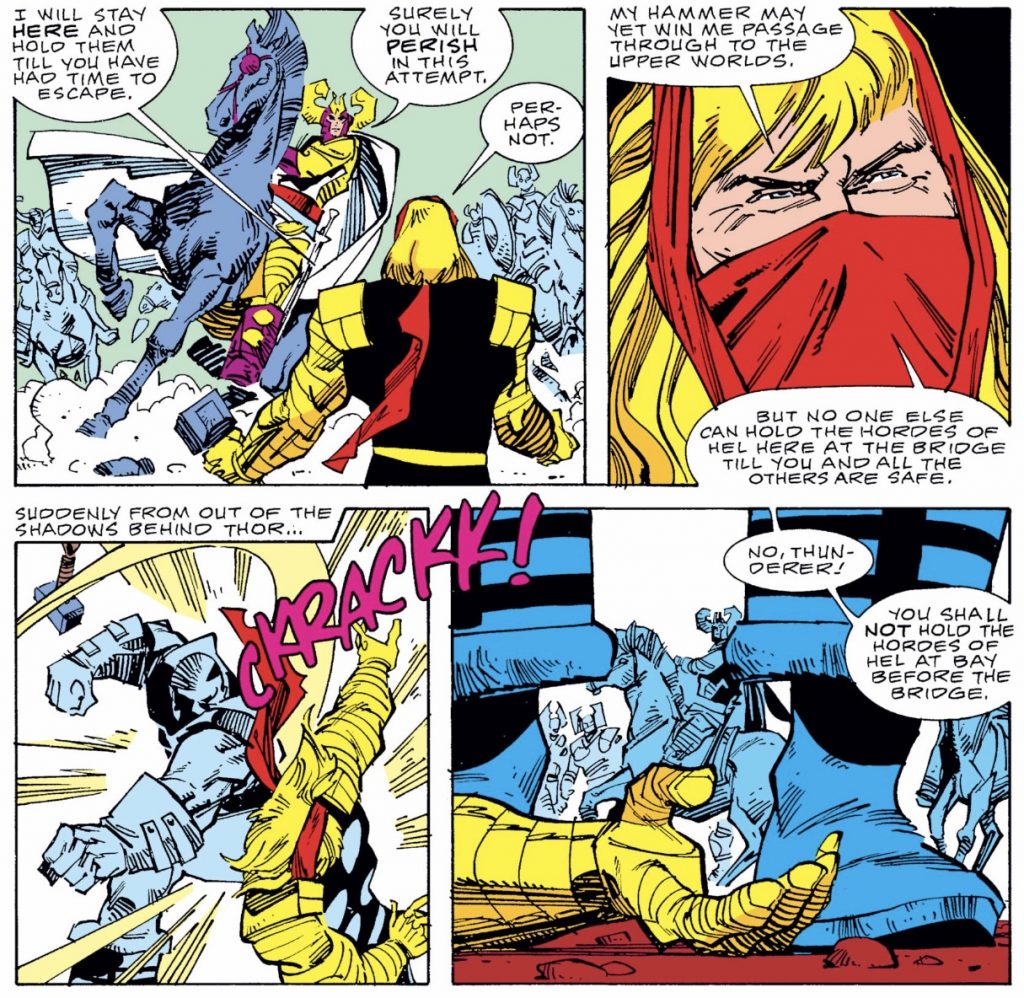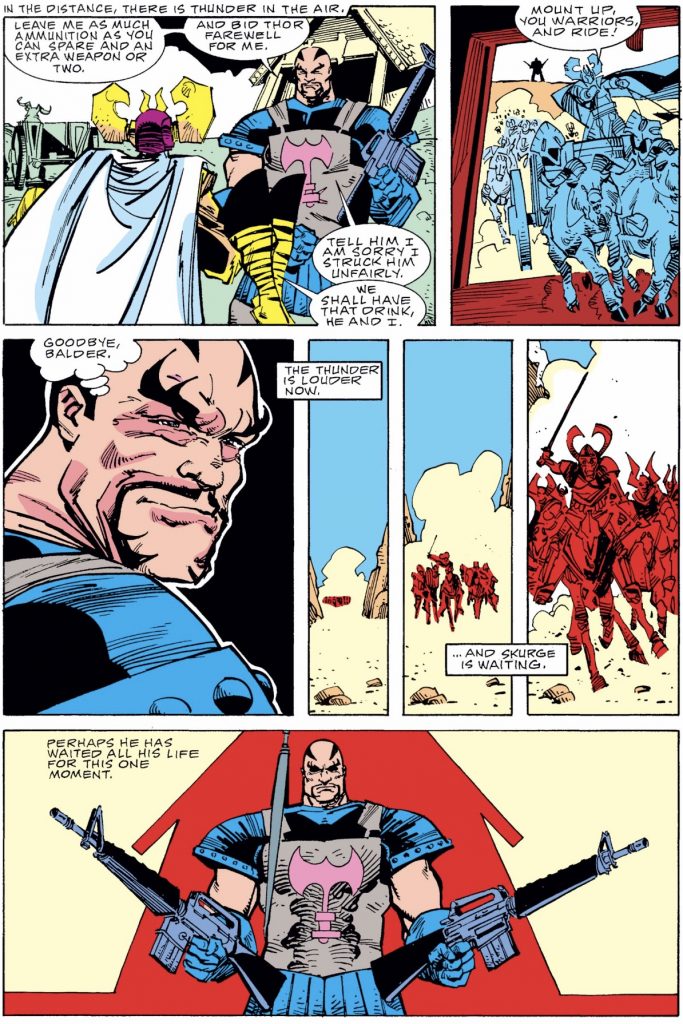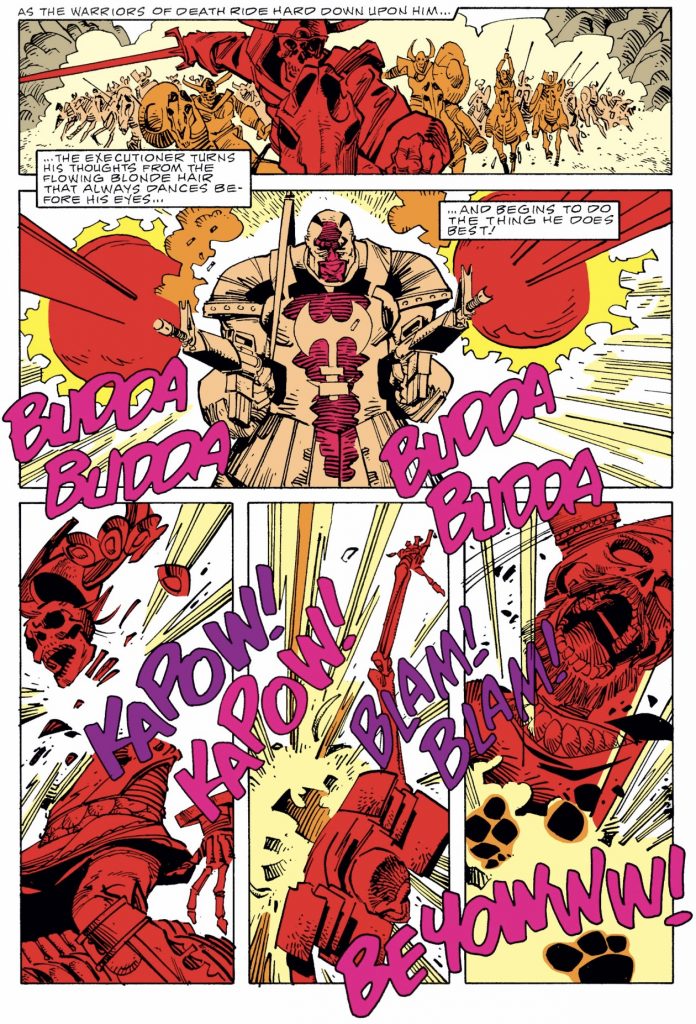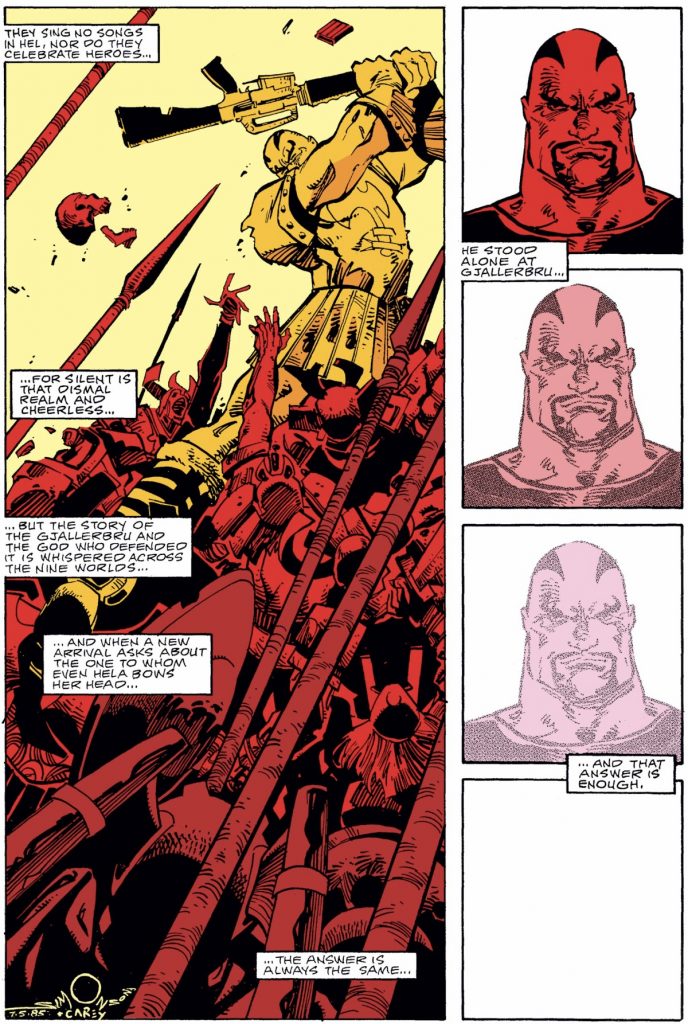To call Walt Simonson’s time on Thor as the greatest ever run in comics wouldn’t generate a ton of pushback. Nerds would argue as they are wont to do, but only a darned knucklehead would fail to acknowledge the Simonson Thor run as at least a member of the short list.
The Simonson Thor run – collected in Thor #337-382 – is chock-full of iconic moments. Some are silly and wholesome like Frog-Thor, while others lean hard into mystical Norse mythology. Absolutely all are wonderfully character driven, featuring not only the Odinson but the Warriors Three, Hela, Enchantress, Heimdall, and so many more.
But today we are going focus on the most metal moment of the Walt Simonson Thor run. It features M-16s and hordes from hell, and if you aren’t into that, then I don’t know what you are looking for in comics.
It is also simultaneously a very emotional story of redemption. We’re talking about Skurge, who stood alone at Gjallerabru.
Iconic Comic Book Panels: He stood alone at Gjallerabru
Skurge was an Asgardian who went by the name the Executioner and wielded a double-bladed battle axe that could cut rifts into other dimensions and gave him control over fire and ice that he could project at his enemies.
Skurge regularly ran afoul of Thor and menaced Jane Foster. He was also helplessly in love with the Enchantress, a situation the Enchantress used to pitilessly manipulate him. She used her charms to keep Skurge under her thrall, mainly as a pawn in her schemes with the trickster god Loki.
But while Skurge was helplessly smitten by unrequited love of the Enchantress, he eventually came to realize that he was being played. And while he wasn’t that bright, he was smart enough to catch on that he had become the butt of a joke and a pawn who didn’t have the respect of his Asgardian warrior peers.
Now, let’s take a brief detour from the tale of Skurge. Comics were written differently in the early 80s. Whereas today’s tales are frequently rebooted and written to later be turned into a 6-issue trade paperback, comics back in that day were written to breathe.
It was commonplace for an 80s comic to have an A plot, which would be the story teased on the cover. But woven throughout were B plots, C plots. The main story would progress for a few pages, then there would be a panel like “Meanwhile…” or “Let’s leave our hero for a moment…” or “Not far away…”, in which the writer would briefly cut away to these side plots.
Simonson–like other comic writers of that era–was masterful at this. So over his long run on Thor, Simonson used these side plots over dozens of issues to keep Skurge and his story on the side burner, yeah, but never fully out of the plot. As a result, by the time Skurge’s metal moment comes in Thor #362, all the elements had fully been established (including the appearance of M-16s).
This means that readers cared at this point. Simonson had given readers ample opportunity to simultaneously be angered at the way he served as a foil to Thor but also be deeply sympathetic to the way he had been used by the Enchantress. Readers could empathize. In fact, the story reminds me of Melody Osborne and my senior year of college. If only I had been like Skurge and stood up to that enchantress before the hordes of hel darkened my heart…
Heh. Where was I?
The buildup of both the A plot–which was an epic story of Thor and the Asgardians traveling into Hel to rescue trapped Midgardians–and Skurge’s B plot tale came together wonderfully and was conveyed meaningfully.
The execution of the Executioner story was flawless. When Skurge had his realization that it was time to stand up and be the hero he needed to be rather than the lackey he was being, he socked Thor right in the kisser, which was a very Skurge thing to do.
Rather than let Thor stand alone against the hordes of Hel at Gjallerabru and make the heroic sacrifice, Skurge knocked him out and declared he would take Thor’s place and that he had no intention of failing. Skurge knew it was a suicide mission. And reader’s knew it was a suicide mission.
It was so much more than just epic action. To be clear, it very much was epic action, but it also was a deeply moving tale of redemption and a person’s decision to make their own decision.
At one point Skurge says, “Whenever they laugh, I hurt inside.” It wasn’t an overly-eloquent expression, it was one every reader could empathize with. So, when Skurge made that decision to grab those M-16s, we were witnessing a character redeemed from a past to be pitied to a present of heroism.
All that–plus it being wonderfully illustrated by Walt Simonson himself–is what made “He stood alone at Gjallerabru” an iconic comic book panel.
Thor #362–much like the entire Simonson run on Thor–really should be read for yourself. You’ll be glad you did. But an extra treat for fans of this iconic comic book panel is the fact it was played out in the most metal way in the Thor: Ragnarok movie.
Sure, the story was a sub-plot just like the comic and was nipped and tucked in order to make it possible in a 2-hour movie, but viewers who at first were furious at Skurge (played by Karl Urban) for taking a knee to Hela were later hooting and hollering when he held off her hordes with machine guns.
Led Zeppelin’s Immigrant Song providing the soundtrack didn’t hurt. Like I said, it was metal. And certainly iconic.
He stood alone at Gjallerbru is collected in trade. Get it here. But treat yourself: here is the entire Simonson Thor run in omnibus format. Remember, you can also ask for it at your FLGS or read it digitally via Marvel Unlimited.



